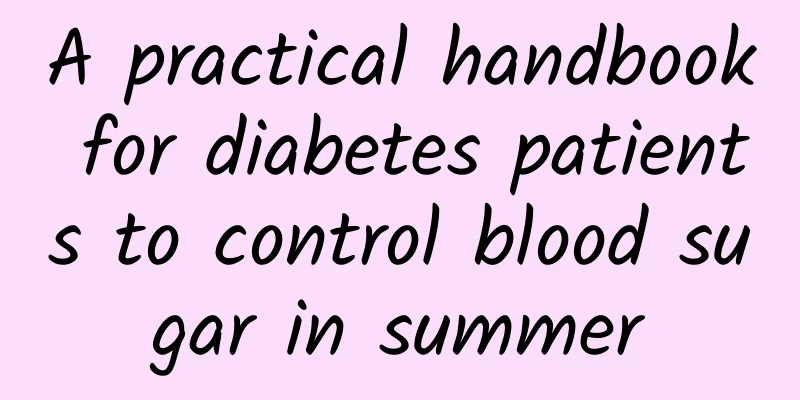This is what we should do when an acute myocardial infarction strikes!

|
This is what we should do when facing acute myocardial infarction! "If you have chest pain, call 120", "Treat myocardial infarction and strive for the golden 120 minutes", this is the meaning of "1120" on China's Myocardial Infarction Treatment Day. If you have a myocardial infarction, call 120 immediately! Follow the doctor's advice after arriving at the hospital! When it comes to the treatment of acute myocardial infarction, we must realize that "time is myocardium, time is life!" If an acute myocardial infarction occurs, timely treatment may save the patient, but necrotic myocardial cells cannot be saved. When the coronary artery is completely blocked for 20-30 minutes, the myocardial cells supplied by the diseased blood vessels begin to gradually die, and after about 2 hours, most of the myocardium will undergo coagulative necrosis, so 120 minutes is the golden treatment time. During this period of time, every second counts! For the general public, once acute chest pain occurs and acute myocardial infarction is suspected, call 120 immediately. The ambulance is equipped with an electrocardiogram machine, which can make a diagnosis and provide preliminary treatment in the first time, and transmit the electrocardiogram results to the hospital's chest pain center, so that "the patient has not arrived, but the information has arrived first. Before the patient arrives at the hospital, the relevant personnel and equipment for coronary intervention surgery are in place", and the patient can be sent to the catheter room in the shortest time for vascular recanalization treatment. Secondly, the ambulance is also equipped with various rescue drugs and equipment, which can provide on-site rescue for life-threatening ventricular tachycardia, ventricular fibrillation, shock and other conditions. After arriving at the hospital, patients and their families should not be indecisive or doubt the treatment suggestions of professional medical staff when faced with the doctor's diagnosis and treatment recommendations. They should buy time for the patients, open blocked blood vessels in the shortest possible time, save the myocardium, and save lives. While you are waiting for 120, you can do this! Before the emergency doctor arrives, the patient needs someone to take care of him. In addition to observing the changes in the patient's condition at any time, you can also do something to help the patient. If you don't know how to do it, you can keep the 120 phone open and provide treatment under the command of the 120 emergency personnel: Lying flat: The patient should remain in a supine position. Do not move the patient at will or let the patient move on his own to avoid increasing the burden on the heart. Oxygen inhalation: Open windows for ventilation, keep indoor air flowing, keep the patient warm and emotionally stable. If there is an oxygen inhalation device at home, the patient should be given oxygen. Medication: If there is a sphygmomanometer, blood pressure can be measured. If the patient does not have hypotension, one nitroglycerin tablet can be taken sublingually. If the symptoms do not improve, the dose can be repeated after 5 minutes, but not more than 3 times. If the patient has already developed hypotension, it is not recommended to use nitroglycerin tablets to avoid worsening of the hypotension. Cardiopulmonary resuscitation: If the patient loses consciousness and does not respond to calls, the patient should be placed on a hard bed and kept in a supine position, and a person with cardiopulmonary resuscitation skills should perform continuous and effective chest compressions. The key points of cardiopulmonary resuscitation are as follows: Positioning: Quick method—the midpoint of the line connecting the two nipples. Posture: Place your hands on top of each other, place the base of your palms against the patient's chest, straighten your elbows, and press vertically downward with force. Compression amplitude: sternum sinks 5 cm-6 cm. Compression frequency: 100-120 times per minute. Perform 30 chest compressions and 2 artificial respirations (30:2) in a cycle, and assess the patient's breathing and pulse after every 5 sets. Only by mastering the correct treatment methods for acute myocardial infarction can patients receive the best treatment after the onset of the disease. |
<<: Can taking vitamin D3 or chondroitin sulfate cure arthritis? Here's what they do...
>>: Understand pneumonia and prevent it scientifically
Recommend
What to do if leucorrhea increases after spontaneous abortion
Normal women's leucorrhea volume is not large...
What is a sandstorm? What are the hazards of sandstorms?
When a sandstorm occurs, floating dust is everywh...
What is the second day of menstruation?
Menstruation is actually a period that every fema...
What should pregnant women do if their stomachs swell at night?
Pregnant women should pay attention to their phys...
What to do if you vomit during pregnancy
What should I do if I vomit during the third mont...
How can I learn to play chess as quickly as possible? Who can teach me? What is the rule of chess?
Chess is a game that many people are interested i...
How long can a grass carp live in a basin? How to cut a grass carp
Fish is a food that every household eats frequent...
Does taking Chinese medicine to regulate the body affect pregnancy?
In today's social development, the social sta...
Stretch marks on breasts during lactation
The formation of stretch marks is very distressin...
How to treat endometrial polyps?
The uterus is an organ that women must protect, b...
Can I still have sex after menopause?
After menopause, women's body functions in al...
Why do cotton T-shirts pill? What to do if cotton T-shirts pill
Friends who have worn pure cotton clothes will kn...
Girl's stool bleeding is bright red and painless
In our daily life, we may encounter some situatio...
Female left lower back pain
In our daily life, everyone suffers from low back...









